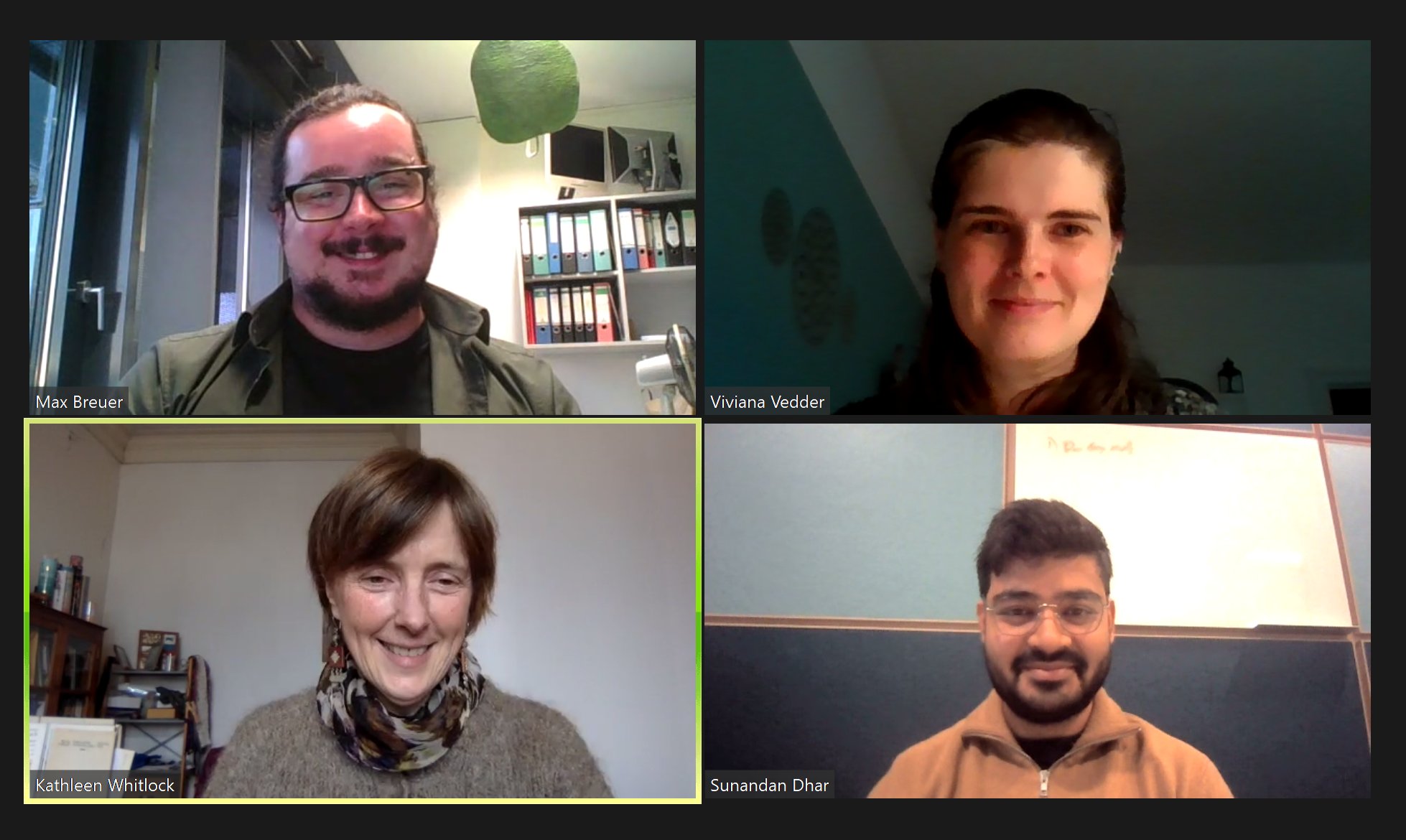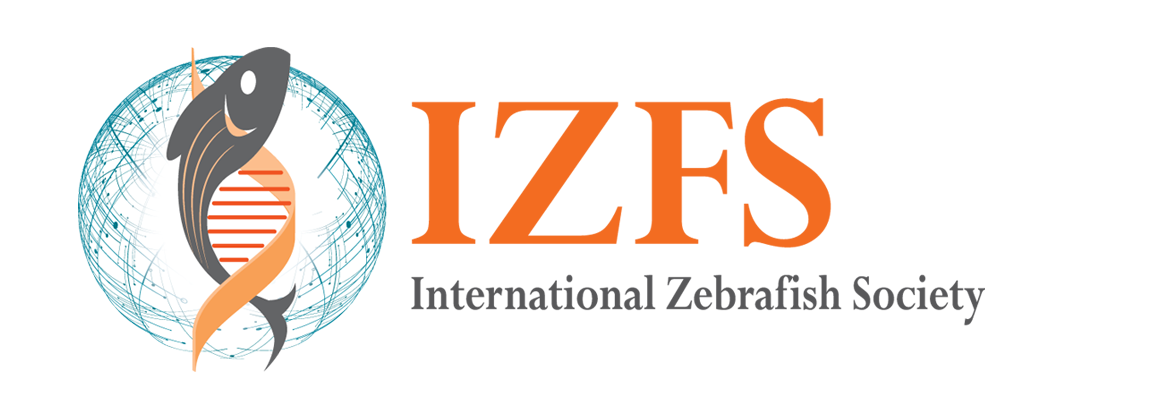Environmental Sustainability Spotlight
In conversation with Dr Kathleen Whitlock

“We as scientists have a huge obligation to do something for the environment.” This is a sentiment that is reinforced throughout our conversation with Dr Kathleen Whitlock. It is a principle that she expresses through her passionate words as well as impactful actions. She expresses her distress that “future generations will not be able to experience the natural world like we did. I don’t want to live in a world with no whales and birds!” As she tells us about the 337 dead whales who washed up on the southern coast of Chile a few years ago, her grief is matched with the resolute intent to fight for the future.
The president-elect of IZFS will not need much of an introduction to the readers of this newsletter. However, her impact on the research community goes well beyond her publications and is highlighted by the two initiatives that she is closely involved with. She is the director of Ciencia al Tiro (“Science immediately”), promoting science outreach and education to nurture the next generation of scientists in Chile. She also founded Ciencia Que Pesca (“Science that grabs you”), an organization developing sustainable solutions for food production through aquaponics.
We spoke to her about her work in aquaponics – a combination of aquaculture and hydroponics. Aquaponics involves growing plants with fish where the waste products of the fish, which are converted to nitrates as a result of the nitrogen cycle, serve as natural fertilizer, allowing plants to grow more quickly. Since the plants absorb the nitrates, the water can be recirculated back to the fish, not thrown out like in most zebrafish facilities. This technology is up to 80% more efficient in water use than traditional agriculture. Additionally, the production is chemical-free (unlike a hydroponics system) since chemicals added to fish would harm the plants and vice versa. Aquaponics re-creates an ecosystem and Dr Whitlock notes: “aquaponics is a great way to teach about an ecosystem, especially the nitrogen cycle.” Various leafy vegetables can grow quite well in aquaponics systems along with fish that can be raised for food or ornamental purposes.
The group is currently working with koi fish since they have high ornamental value, a low protein-diet, and are very productive in fertilizer generation! However, Kate started her aquaponics journey in 2012 with zebrafish. “Zebrafish researchers are perfectly equipped for aquaponics. If you understand how the systems in a fish facility work, you can run an aquaponics system too.” This involves monitoring water parameters, environmental conditions, and fish health and behaviour. She tells us that her hands-on experience in setting up her lab’s fish facility and years of experience observing fish gave her many of the skills needed for aquaponics. She explains, “you have to be observant; this is common for science and aquaponics.” Observing the swimming behaviour of fish or colouration pattern of plant leaves can tell us about their health and indicates potential changes to system parameters.
Kate maintains that we should be looking for ways to reuse the discharge water coming out of zebrafish facilities rather than dumping it down the drain. She talks about how she would fill buckets of the effluent water to irrigate the garden outside the facility. She particularly encourages researchers moving to a new institute who might have a say in the way their facility is being set up. “Now there are more incentives and grants for universities to ‘go green’. Your zebrafish facility can be part of this sustainability drive.” There are, of course, challenges with institutional authorities and public perceptions of water coming out of a research facility. Our earlier conversation with architect Austin Bailey highlighted the challenges of getting past outdated regulations about wastewater in many countries. Kate stresses the need for better communication between all parties. It also requires an understanding of the water systems and infrastructure to separate wastewater streams and transport it to appropriate locations. As scientists, we need to be able to produce the facts about this water. She echoes the sentiments expressed by Austin as well: “If we can get a document of water quality, it would help to convince people. We can then compare it to tap water and show that it does not contain heavy metals or toxic substances but contains all these nutrients that are great for watering plants.”
At the bedrock of all of this is the issue of public trust in scientists. A lack of engagement with the general public has fostered misconceptions and misinformation about scientific research, which is also evident in public discourse about the pandemic. Researchers are used to being overly technical and guarded about their ongoing work, which can be perceived as being secretive and untrustworthy to people outside academia. “We’re so busy writing grants and papers, we don’t have the time to talk to the people paying the taxes that fund much of our research”. Kate believes that researchers need to step out of their bubble of academia and have regular interactions with the people in their community. It also helps if you can be less solemn and more chistoso (funny/witty) at times, as she puts it. People need to see that scientists are humans and that the welfare of all of society is the ultimate goal. Such efforts can also clear up misconceptions about the safety of research being done, including the issue of the water discharge. “I invite people into our facility and ask them to point out the toxic chemicals. If there were any, the fish would all be dead!” She points out that if people are willing to use their aquarium water for their plants at home, there is no reason why the water from fish facilities cannot be used for similar purposes.
Active efforts at outreach can go a long way in rebuilding the public trust, as Kate has shown through Ciencia al Tiro. The group develops science workshops and demonstrations for school children in Valparaiso and other regions in Chile. By showing children that science is everywhere and can be used to solve everyday problems, they reinforce the idea that science need not be restricted to textbooks and can be interesting and fun. Their book and videos, appropriately titled ‘The Joy of Science’, provide great tutorials for teaching the physics, chemistry and biology underlying everyday activities. Among these are lessons about water and the environment, including aquaponics and zebrafish as tools. “If someone has a fish facility going and wants to do outreach for education, aquaponics is a great way to teach science and the importance of water chemistry. Zebrafish are a wonderful system to educate students about the environment.” She describes a project where school students collected food waste from a local restaurant to make fish food. They then used egg production to assay the effects of their ‘home-made’ food. Such activities nurture curiosity about the environment and the critical thinking needed for the next generation of problem-solvers. She hopes that efforts at education will not only benefit the community, but also push scientists to engage and communicate more effectively.
Kate champions movements such as ‘Keep it in the ground’ to prevent further ecological damage from fossil fuels. She is a strong proponent for reducing air travel as much as possible. She maintains a personal rule of one flight per year, sticking to trains and buses for all else. While not a popular opinion, she urges us all, as part of the academic community, to think about how much we travel for conferences and if it is always necessary. The ongoing success of virtual meetings provides hope that we can figure out solutions to recreate the personal engagement of in-person meetings without the massive carbon emissions.
As part of IZFS, we need to be active in promoting sustainable solutions. Kate explains, “Part of my ambition for IZFS is to push the idea of sustainability forward.” She expresses her vision for a repository of resources for greener research on an updated IZFS website. This includes practical ideas about water reuse and sustainable lab practices. “People can also share information about the best reagents and consumables, or if some detergents are better than others if you want to reuse the grey water.” As labs share their stories, it should inspire the entire community to be more thoughtful about their resource use. Most importantly, it should push the idea that climate change is a problem that we can, and should, actively tackle.
We thank Dr Whitlock for her time and her passionate words that inspire us to drive forward towards our goal of sustainability.
Interview by Dr Maximilian Breuer, Viviana Vedder and Sunandan Dhar.




